Thomas Eakins: Leonard Baskin on Thomas Eakins
from Iconologia
“Of the innumerable objects that litter the surfaces of my quotidian ambience, none can be counted as sacrosanct except a scuffed and soiled old cigar-box, which is a treasured reliquary holding rel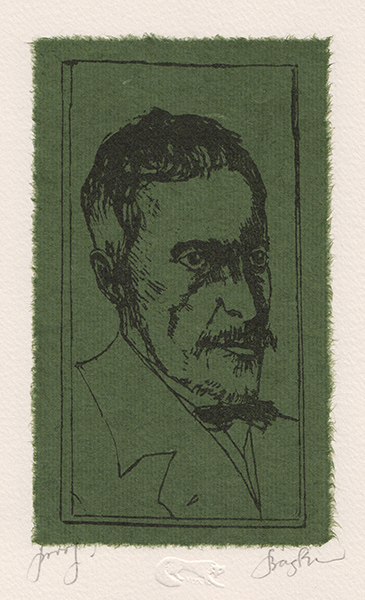 ics of Thomas Eakins; in that dim topless box, which was once his, rest several of the red wax-topped pins that are deployed, like battalions on a vast plain in an old military book, in his perspective drawings: and two small brushes, magical tools now for having been in Eakins’s hand, they are directly redolent of the painter and they bespeak, those two tiny brushes, an age of minute concern with the detail of aspect and habilement; that scarred tobacco-box also contains an odd homemade
ics of Thomas Eakins; in that dim topless box, which was once his, rest several of the red wax-topped pins that are deployed, like battalions on a vast plain in an old military book, in his perspective drawings: and two small brushes, magical tools now for having been in Eakins’s hand, they are directly redolent of the painter and they bespeak, those two tiny brushes, an age of minute concern with the detail of aspect and habilement; that scarred tobacco-box also contains an odd homemade 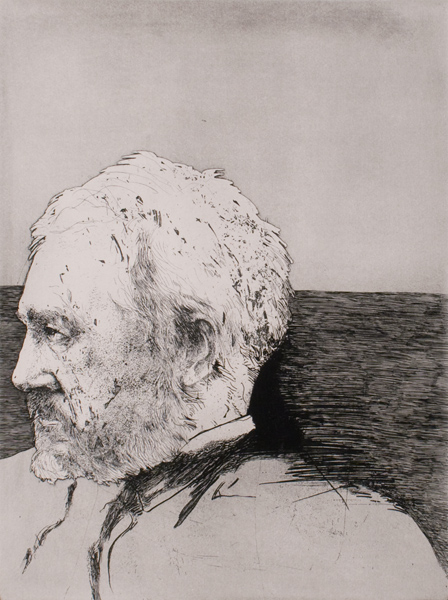 pen, encrusted with wax which secures its strange nib (Eakins wrote a beautiful, easy-flowing version of copperplate, a hand taught to him by his father, Benjamin, who was a scribe). What did Eakins draw or write with that pen? And beyond all of these, there is a small brazen set of dividers, well-made and well-worn. Relics are devices of veneration. Indeed, I venerate Thomas Eakins, America’s greatest painter. But I own no relics of Copley or of Heade or of Church, or of the sculptors Rimmer and Saint-Gaudens, all in their manners and metiers the very near equal of Eakins. No, it is not the paintings, despite the Rembrandtesque grandeur of their reali
pen, encrusted with wax which secures its strange nib (Eakins wrote a beautiful, easy-flowing version of copperplate, a hand taught to him by his father, Benjamin, who was a scribe). What did Eakins draw or write with that pen? And beyond all of these, there is a small brazen set of dividers, well-made and well-worn. Relics are devices of veneration. Indeed, I venerate Thomas Eakins, America’s greatest painter. But I own no relics of Copley or of Heade or of Church, or of the sculptors Rimmer and Saint-Gaudens, all in their manners and metiers the very near equal of Eakins. No, it is not the paintings, despite the Rembrandtesque grandeur of their reali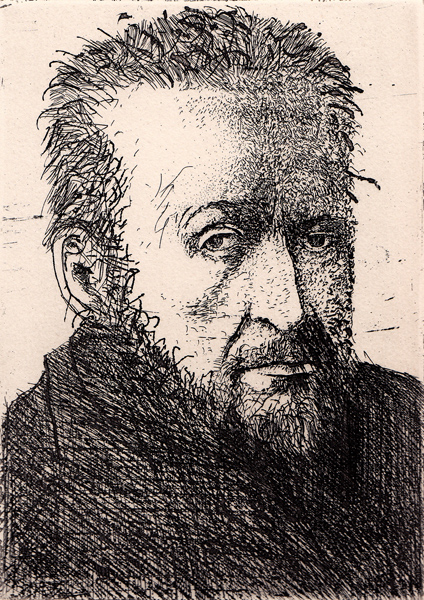 sm, that lifts Eakins
sm, that lifts Eakins 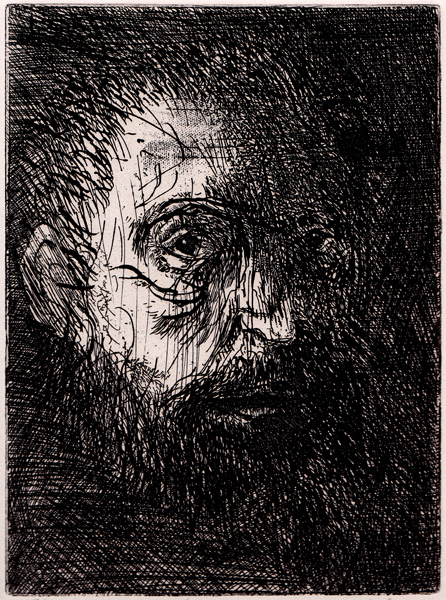 apart; it is rather the perceptible actuality of his indomitable spirit, as he moved through his inhospitable world, arraying his time and place with masterworks, despite the near-universal scouring stupidity and aberrant mis-appreciation. Yes, it is the man’s life and his unequaled soul-diminishing struggle to preserve his artistic probity. His forbearance was stoutly dignified at the braying of prurient prudes and he held fast against the onslaughts of privileged philistinism. His friend, Walt Whitman, said of him, “Tom Eakins is not a painter, he’s a force.” It was a life, that is, a career of near-total denigration, brutish indifference and neglect. The searing effects of this lapse in patronage, this national deficiency in judgement, this fundamental want of understanding, can be clearly read in his face as
apart; it is rather the perceptible actuality of his indomitable spirit, as he moved through his inhospitable world, arraying his time and place with masterworks, despite the near-universal scouring stupidity and aberrant mis-appreciation. Yes, it is the man’s life and his unequaled soul-diminishing struggle to preserve his artistic probity. His forbearance was stoutly dignified at the braying of prurient prudes and he held fast against the onslaughts of privileged philistinism. His friend, Walt Whitman, said of him, “Tom Eakins is not a painter, he’s a force.” It was a life, that is, a career of near-total denigration, brutish indifference and neglect. The searing effects of this lapse in patronage, this national deficiency in judgement, this fundamental want of understanding, can be clearly read in his face as 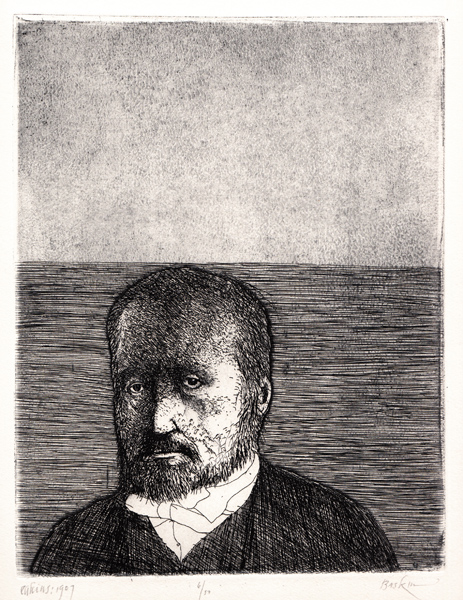 its furrows deepen, the flesh tightens over facial bone, its creases sink into crevices, its look of bewildered but deep hurt becoming fixed, its lines running towards a tragic configuration. Eakins was not entirely alone; his loyal and talented wife Susan was a classic instance of devotion; she was a buttress, comrade, lover: a few alert critics championed his work. A large number of his pupils revered him, posed for him, swam with him, set up an academy for him, became very close to him, the young sculptor Samuel Murray becoming a virtual son to him. Eakins was innocent of fancy; his perception of the world was adamantine in its palpable
its furrows deepen, the flesh tightens over facial bone, its creases sink into crevices, its look of bewildered but deep hurt becoming fixed, its lines running towards a tragic configuration. Eakins was not entirely alone; his loyal and talented wife Susan was a classic instance of devotion; she was a buttress, comrade, lover: a few alert critics championed his work. A large number of his pupils revered him, posed for him, swam with him, set up an academy for him, became very close to him, the young sculptor Samuel Murray becoming a virtual son to him. Eakins was innocent of fancy; his perception of the world was adamantine in its palpable 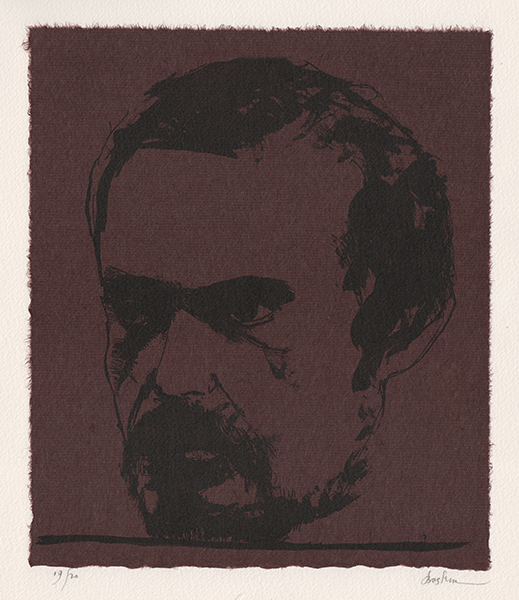 directness, plainness, ordinariness. He accepted the evidence of his senses; he was the arch-American realist trying to paint what he saw. But he was Eakins, touched by Rembrandt and Velasquez. And in the alembic that was his palette, the simple oarsman and plain net menders are trapped in a landscape of frozen time and extenuated space. The distressing elemen t in Eakins’s paintings was its honesty; it had naught of the preferred dishonesty of sentimentalism, wildly current in his time. His portraits touch into deep and veiled recesses of his sitters’ personae; the women are almost always profoundly tragic with deep, inward-searching eyes, the visages in the deepest melancholia, the men rigidly monumental, clothed in golden light. His sitters were in the greater number alarmed at the revelatory depictions and tended not to return to the Mt. Vernon Street
directness, plainness, ordinariness. He accepted the evidence of his senses; he was the arch-American realist trying to paint what he saw. But he was Eakins, touched by Rembrandt and Velasquez. And in the alembic that was his palette, the simple oarsman and plain net menders are trapped in a landscape of frozen time and extenuated space. The distressing elemen t in Eakins’s paintings was its honesty; it had naught of the preferred dishonesty of sentimentalism, wildly current in his time. His portraits touch into deep and veiled recesses of his sitters’ personae; the women are almost always profoundly tragic with deep, inward-searching eyes, the visages in the deepest melancholia, the men rigidly monumental, clothed in golden light. His sitters were in the greater number alarmed at the revelatory depictions and tended not to return to the Mt. Vernon Street 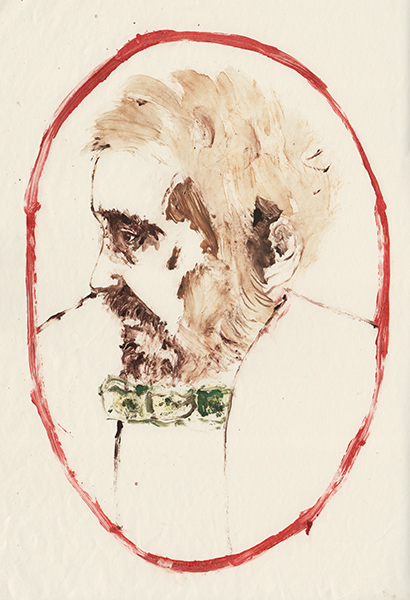 studio, forcing Eakins to abandon the pictures. His “TheGross Clinic”, perhaps the great American painterly masterwork, was exhibited in the medical section of the Chicago 1890s World Fair instead of the Hall of Art (or whatever its banal name was), as it was judged offensive to the American sensibility! (See Mrs. Trollope and see Dickens et alia, in reference to that species of sensibility.) Dr. S. Gross, a distinguished surgeon and teacher of his day, who would be forgotten but for the fame attached to Eakins’ portrait of him, his colleagues and students, does not mention Eakins, nor the historic event of the creation of “The Gross Clinic” in his two-volume autobiography. Eakins was quite continuously attacked by crippling know-nothing fat-headedness. He was dismissed from his cherished post as head of painting at the
studio, forcing Eakins to abandon the pictures. His “TheGross Clinic”, perhaps the great American painterly masterwork, was exhibited in the medical section of the Chicago 1890s World Fair instead of the Hall of Art (or whatever its banal name was), as it was judged offensive to the American sensibility! (See Mrs. Trollope and see Dickens et alia, in reference to that species of sensibility.) Dr. S. Gross, a distinguished surgeon and teacher of his day, who would be forgotten but for the fame attached to Eakins’ portrait of him, his colleagues and students, does not mention Eakins, nor the historic event of the creation of “The Gross Clinic” in his two-volume autobiography. Eakins was quite continuously attacked by crippling know-nothing fat-headedness. He was dismissed from his cherished post as head of painting at the 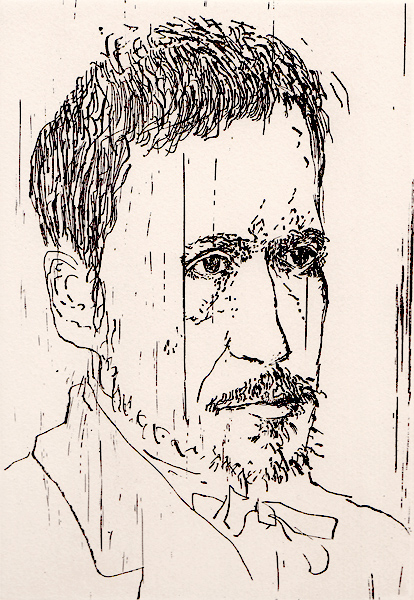 Pennsylvania Academy of Fine Arts, because his passion for honesty and probity caused him to reveal the genitals of a male model before a mixed-class of young men and women. The ferocious struggle that ensued (that bruised priggish sensibility again) which revealed a streak of religious zealotry in a branch of his family and exposed the crude opportunism of a trusted student, further deepened and darkened his visage. Three American museums bought paintings from Eakins in his lifetime. Albert Barnes, the Argyrol king and prescient collector of Renoir, Cézanne and others, paid Eakins $5,000 for his large oil study of Dr. Agnew for the “Anatomy of Dr Agnew”; that sum which came to Eakins c. 1905 represented more than the totality of his lifelong earnings from painting. It was a benefice to us and to the generations that surround us, that Benjamin Eakins left his son that fine house and a sufficiency to carry on with life’s needs. But Eakins was combatively exuberant, buttressed with mighty r
Pennsylvania Academy of Fine Arts, because his passion for honesty and probity caused him to reveal the genitals of a male model before a mixed-class of young men and women. The ferocious struggle that ensued (that bruised priggish sensibility again) which revealed a streak of religious zealotry in a branch of his family and exposed the crude opportunism of a trusted student, further deepened and darkened his visage. Three American museums bought paintings from Eakins in his lifetime. Albert Barnes, the Argyrol king and prescient collector of Renoir, Cézanne and others, paid Eakins $5,000 for his large oil study of Dr. Agnew for the “Anatomy of Dr Agnew”; that sum which came to Eakins c. 1905 represented more than the totality of his lifelong earnings from painting. It was a benefice to us and to the generations that surround us, that Benjamin Eakins left his son that fine house and a sufficiency to carry on with life’s needs. But Eakins was combatively exuberant, buttressed with mighty r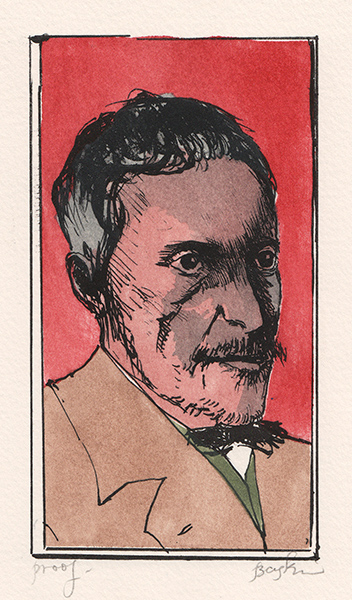 eserves of strength, immensely alive to an intense joie de vivre; a photograph shows him thrusting his heavy, old, nude body into a crashing wave, somewhere on the Jersey coast; that joyous photograph displays the undiminished surviving Eakins. That force which Whitman specified was promethean, unstoppable, impervious, ever onward-flowing; and yet a photograph taken of him in Thomas Eakins Monotype – 8×11.75 inches1967 reveals a stricken Eakins, the invisible Eakins of this ghastly story: the superbly successful John Singer Sargent while visiting Philadelphia was asked by his rich, socially secure, all-knowing hostess, “Is there anyone at all you’d like to meet in Philadelphia?”, “Well,” replied Sargent, “there’s Eakins, for instance.” “Who’s Eakins?” said the hostess. Eakins was interested in the sciences; he scattered scientific apparatus in the portraits of the physicists, chemists, etc. (his friends, usually). He dwelt with interested care on the depiction of specific instruments and laboratory
eserves of strength, immensely alive to an intense joie de vivre; a photograph shows him thrusting his heavy, old, nude body into a crashing wave, somewhere on the Jersey coast; that joyous photograph displays the undiminished surviving Eakins. That force which Whitman specified was promethean, unstoppable, impervious, ever onward-flowing; and yet a photograph taken of him in Thomas Eakins Monotype – 8×11.75 inches1967 reveals a stricken Eakins, the invisible Eakins of this ghastly story: the superbly successful John Singer Sargent while visiting Philadelphia was asked by his rich, socially secure, all-knowing hostess, “Is there anyone at all you’d like to meet in Philadelphia?”, “Well,” replied Sargent, “there’s Eakins, for instance.” “Who’s Eakins?” said the hostess. Eakins was interested in the sciences; he scattered scientific apparatus in the portraits of the physicists, chemists, etc. (his friends, usually). He dwelt with interested care on the depiction of specific instruments and laboratory 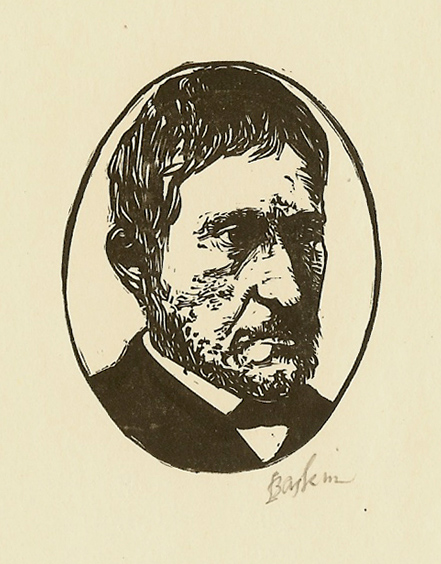 paraphernalia, but more critical were his significant contributions to the evolvement of the cinema. Thomas Eakins used photography as an adjunct to his pursuit of reality, using photographs as an aide-memoir for his painting, but inevitably the photographs emerge as artifacts, meritorious in their own right. How remarkable that the special luminous honesty that pervades Eakins’ paintings suffuses the subjects in his photographs. There is a notebook in a private Philadelphia collection, kept by Eakins as a journal of work begun, when finished, etc.; in it he lists all of his possessions; on several pages he numerates the furniture, looking glasses, cutlery, dishes, candle sticks, nails, nuts, bicycle, studio impedimenta: the list ends with, “and a house full of pictures that no one wants”.
paraphernalia, but more critical were his significant contributions to the evolvement of the cinema. Thomas Eakins used photography as an adjunct to his pursuit of reality, using photographs as an aide-memoir for his painting, but inevitably the photographs emerge as artifacts, meritorious in their own right. How remarkable that the special luminous honesty that pervades Eakins’ paintings suffuses the subjects in his photographs. There is a notebook in a private Philadelphia collection, kept by Eakins as a journal of work begun, when finished, etc.; in it he lists all of his possessions; on several pages he numerates the furniture, looking glasses, cutlery, dishes, candle sticks, nails, nuts, bicycle, studio impedimenta: the list ends with, “and a house full of pictures that no one wants”.
—Leonard Baskin
From ICONOLOGIA © 1988 Leonard Baskin
